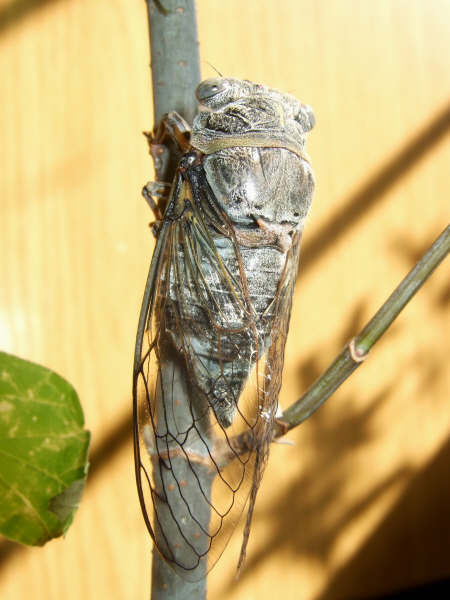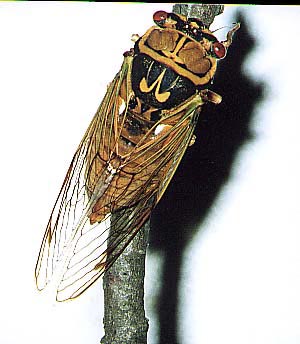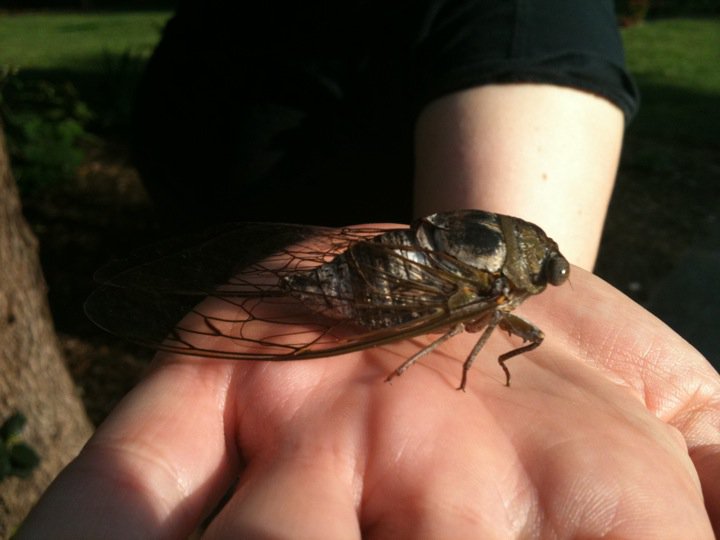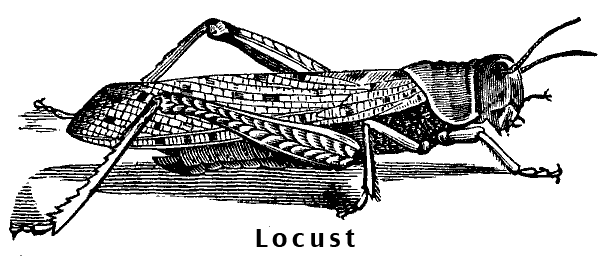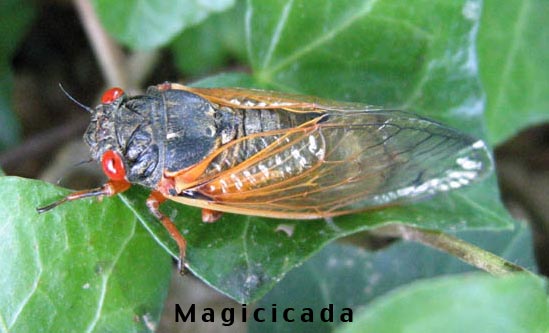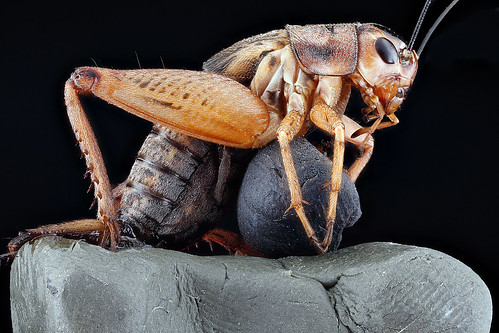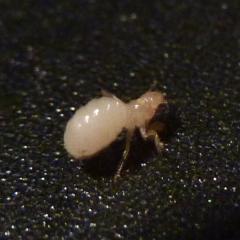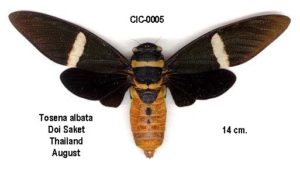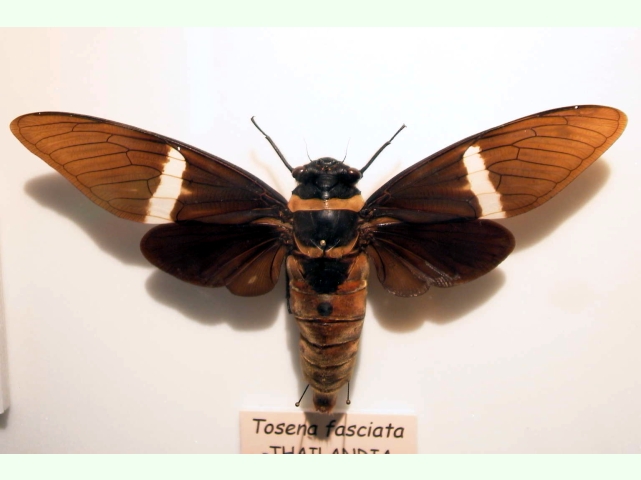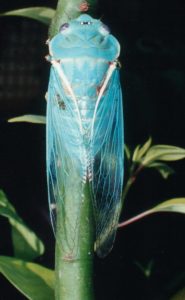The cicadas belonging to the tribe Gaeanini (Ambragaeana sp., Gaeana sp., and Becquartina sp.)1 are among the world’s most beautiful cicadas. These cicadas have broad, multicolored wings. Their wings beat slowly rather than vibrate quickly, allowing them to flutter like butterflies. Michel Boulard calls them “Butterfly Cicadas” 2. Watch the video of a Gaeana festiva in flight:
Behold the beautiful “Butterfly Cicadas”:
Ambragaeana ambra
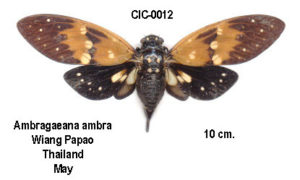
photo by Michel Chantraine.
Distinguishing features: Brown forewings with white/cream colored spots. Black hind wings with white/cream colored spots/markings.
Habitat: Southeast Asia
Gaeana cheni
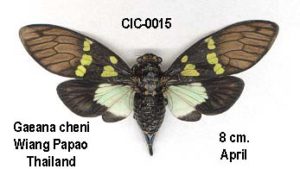
photo by Michel Chantraine.
Distinguishing features: Black/Brown forewings with chartreuse/yellow spots. Black and mint-green hind wings.
Habitat: Southeast Asia
Callogaeana festiva
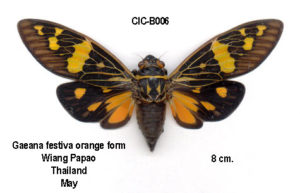
Orange form of Gaeana festiva
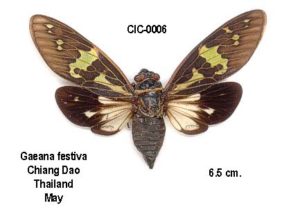
White form of Callogaeana festiva
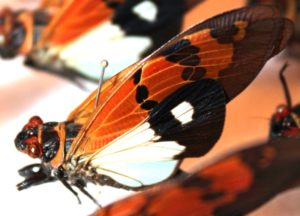
Orange & White form of Gaeana festiva
A photo of a living C. festiva.
Distinguishing features: Gaeana festiva come in an amazing variety of color variations. Colors include orange, yellow, white and pale green; fore and hind wings are often different colors as well. G. festiva, as Michel Boulard speculates, might be a periodical cicada, as it emerges in very large numbers 2. They might he proto-periodical as well.
Habitat: India, Southeast Asia3
Gaeana hageni
A photo of a Gaeana hageni specimen.
Distinguishing features: Chartreuse-green forewings. White hind wings. No spots (unlike most Gaeana).
Habitat: Malayan Archipelago3
Gaeana maculata
Gaeana cheni
Distinguishing features: Black wings and body with yellow spots. (Maculata means spotted.)
Habitat: India, China3
Gaeana sulphurea
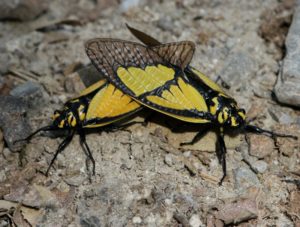
A photo of a Gaeana sulphurea specimen.
Distinguishing features: Black and yellow wings & body.
Habitat: India3, Bhutan
Becquartina electa
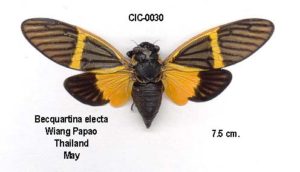
Photo by Michel Chantraine.
Distinguishing features: Dark brown forewings with striking yellow lines forming a triangle-like shape. Dark brown and yellow hind wings.
Habitat: Southeast Asia
Becquartina versicolor
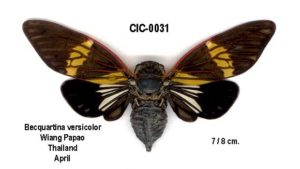
Photo by Michel Chantraine.
Distinguishing features: Dark brown forewings with red veins and striking yellow lines, sort of in the shape of the number 7. Black hind wings with white markings.
Habitat: Southeast Asia
Note: there are
References:
- Sanborn, Allen F., Phillips, Polly K. and Sites, Robert W. The Cicadas of Thailand (Hemiptera: Cicadidae). p 1.
- Boulard, Michel. 2007. The Cicadas of Thailand, General and Particular Characteristics, Volume 1. p 66,72, Plate 30.
- Distant, W.L. 1892. A Monograph of Oriental Cicadidae. The Order of the Trustees of the Indian Museum of Calcutta. p 104-108.




